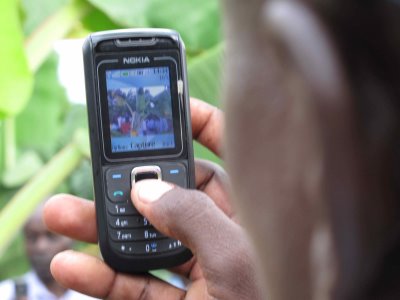The pros and cons of user-generated content
Radio and TV audiences today don’t just want to be spoken to by broadcasters; they want to join the discussion. They want to share their views and stories, and modern communication tools like mobile phones, digital cameras and the internet give them that opportunity.
Broadcasters who do not grasp this fundamental change in communication behavior may soon find themselves bypassed by social media sites like Facebook and Twitter.
In order to stay relevant, radio and TV stations have to find new ways of integrating the audience into their programming. On the simplest level, this can be done by taking letters and e-mails from the audience seriously. A next level can be call-in programs, which center on listeners’ concerns, questions, comments and experiences.
User-generated content comes in many forms
In addition to these traditional ways of integrating audience comments, concerns and questions into the program, there are other ways in which user-generated content (UGC) can play a big role in programming. In the end, it can be beneficial for the broadcasters, as well as the audience, by opening up new possibilities and perspectives for both.
There are many different kinds of UGC that broadcasters can use:
-
Call-ins, vox pops, eyewitness accounts
-
Letters to the editor, faxes, text messages (SMS)
-
Photos
-
Videos
-
Audios / podcasts
-
Story ideas / tip-offs
-
Comments on the company website
-
Material from social networking sites
-
Articles / text blogs
User-generated content also works in developing countries
Some broadcasters in poorer countries are still a little wary of integrating UGC into their programs. They think that UGC is only for highly developed countries with good technical infrastructure.
 But they overlook that even a simple mobile phone can be a great tool for the audience to submit content.
But they overlook that even a simple mobile phone can be a great tool for the audience to submit content.
People can tell their stories over the phone, they can send text comments as SMS and they can even contribute pictures they've taken with the camera that's integrated into most cell phones these days.
These contributions add new angles to the broadcasting. They will allow the broadcaster to get information from regions that were previously hard to reach for staff journalists. And in the case of breaking news, people at the scene can transmit information long before the professional journalists even get there.
When broadcasters receive content from people who are not professional journalists, they must check it for accuracy, authenticity and for violations of copyright and good taste. This requires extra work, but the result will be well worth it.
| Benefits associated with user-generated content | Risks associated with user-generated content |
|---|---|
|
|
Guidelines for user-generated content
UNESCO, the United Nations Educational, Scientific and Cultural Organization, encourages broadcasters "particularly from the developing countries, to interact with their viewers and listeners to enhance the quality of the User–Generated Content (UGC) through improved Media and Information Literacy (MIL) of their audiences and, more specifically, UGC producers."
The organization hopes that this will "empower people to seek, evaluate, use and create information/content, to encourage social inclusion and public debate on major development issues and, ultimately, to improve people’s lives."
Consequently, UNESCO and the Commonwealth Broadcasting Association published guidelines for broadcasters on user-generated content and media and information literacy. These guidelines are a good starting point for media organizations interested in exploring new ways of getting in touch with their audiences.
Author: Thorsten Karg





Feedback